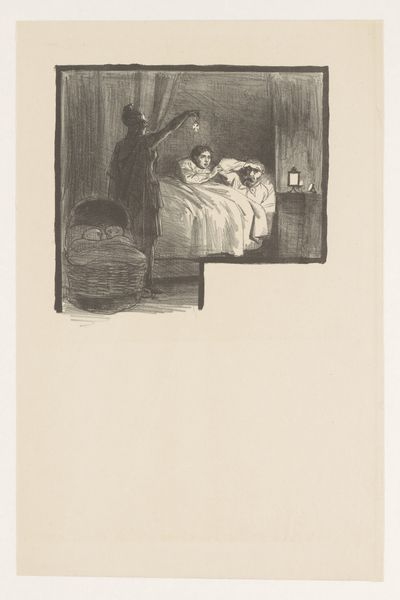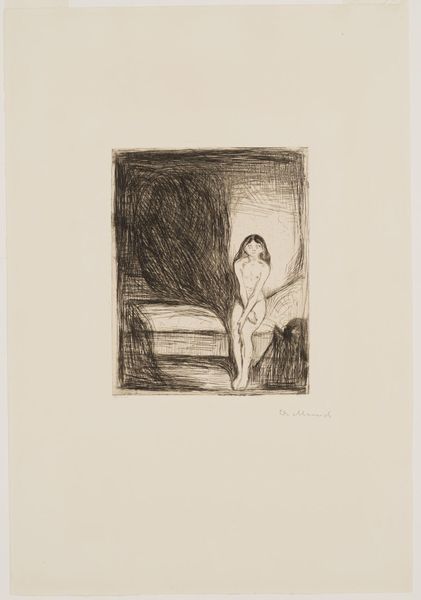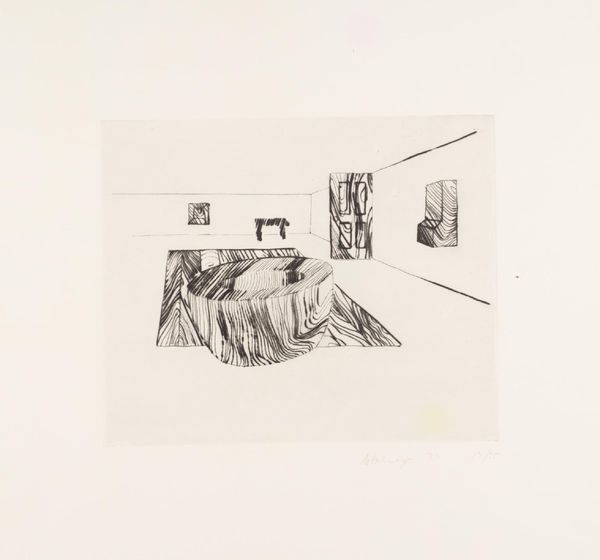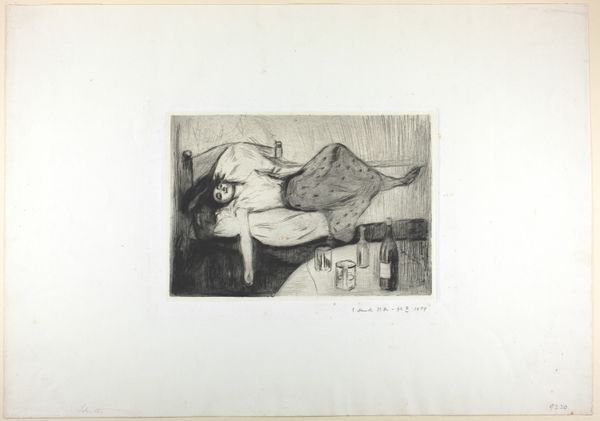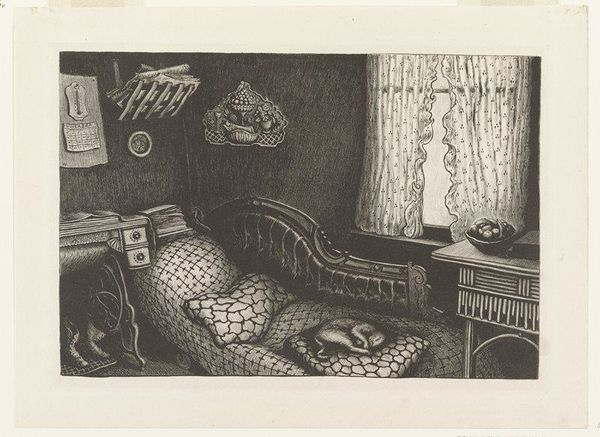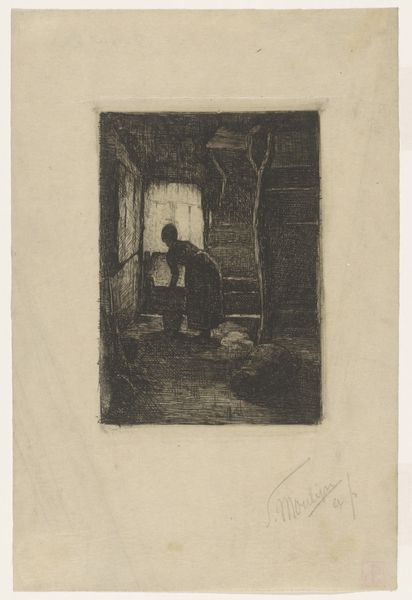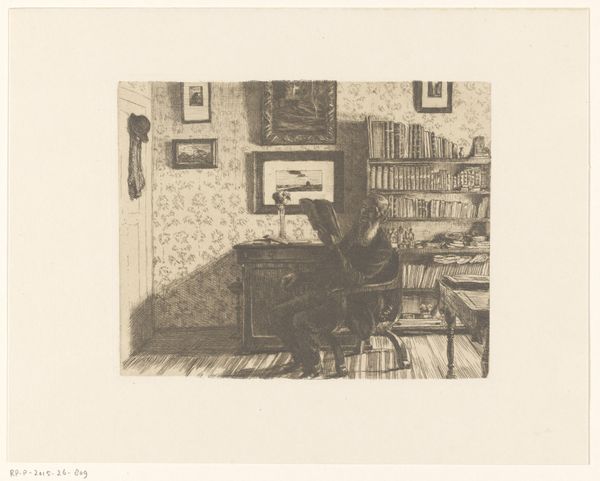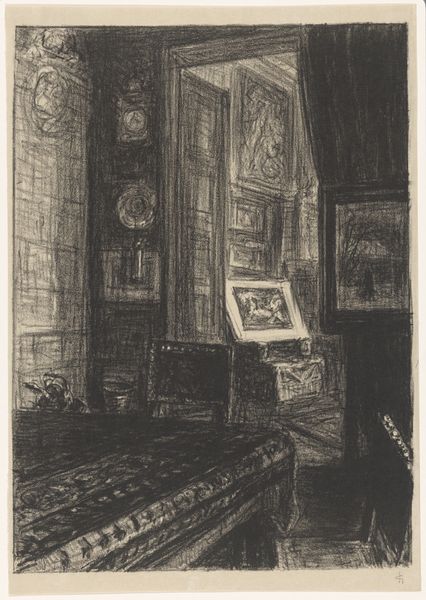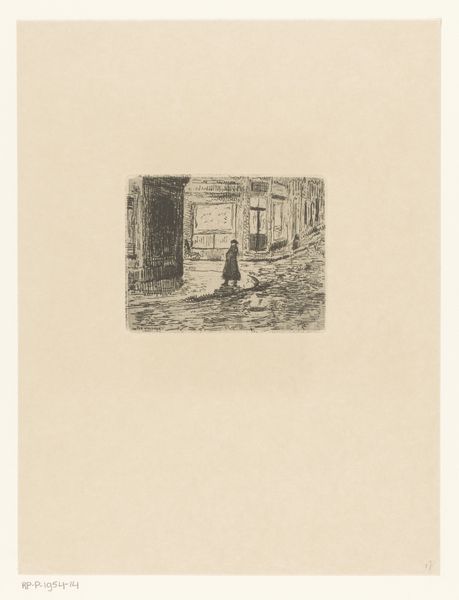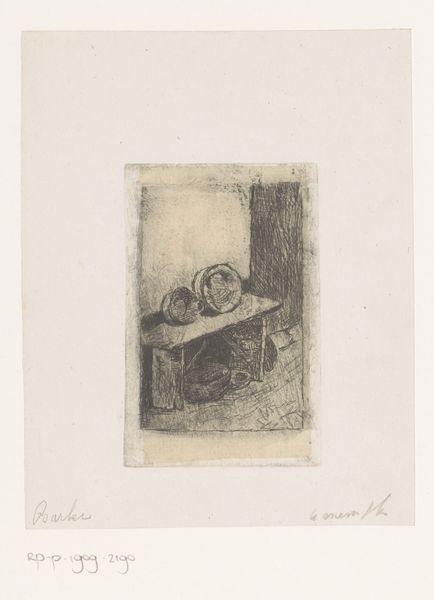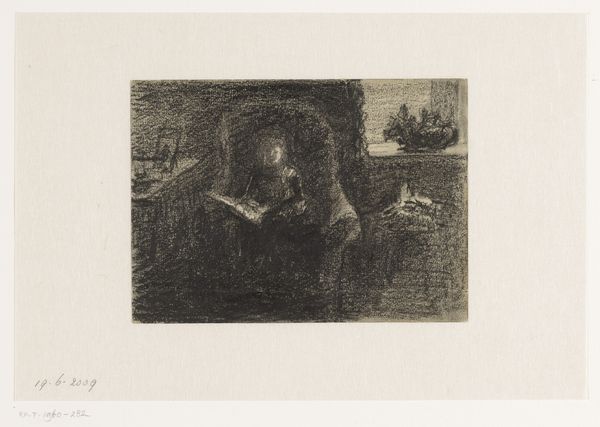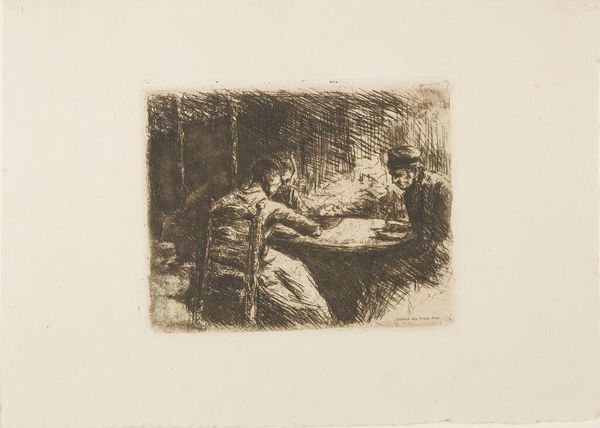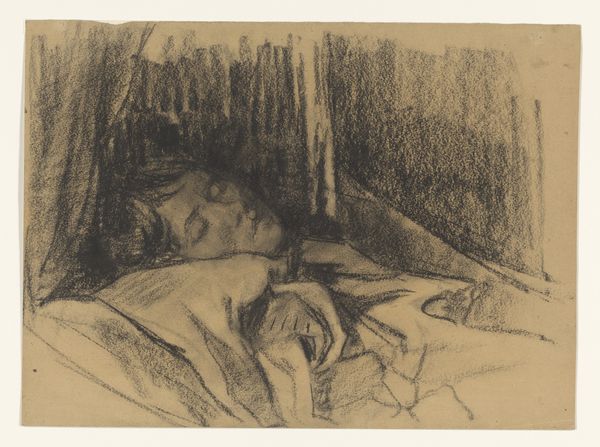
drawing, print, etching, paper
#
drawing
# print
#
etching
#
figuration
#
paper
#
line
Dimensions: height 268 mm, width 380 mm
Copyright: Rijks Museum: Open Domain
Curator: Before us is an etching by Eduard Hallberger, dating to 1866, titled "Oversteken van een rivier bij Comorn". Editor: It feels intimate, like a glimpse into someone's private space. The composition is almost claustrophobic, the objects crammed together with barely any room to breathe. Curator: Etchings, you know, can evoke a powerful sense of immediacy, that artistic decision has been quickly made by the hand to put to plate; it’s so much a part of history's repertoire of capturing such details! Here we see linear precision to a simple bedroom with objects from a room to imply symbolic meaning as a vessel and a resting space of comfort, a haven, within such dark lines... Editor: Haven, maybe, or a trap? There is something incredibly bleak and confined about this room. Notice how the darkness clusters around the window, almost barricading it? Curator: The symbolism is powerful in those contrasts you mention: window could be indicative as not just a divider between the internal to external world or lack of clarity about reality, the shadow reminds the subconscious of its own separation anxiety of inside/outside, life/death, and hope/despair. A space we inhabit both physically and psychologically. The composition also emphasizes themes from our past lives to tell our collective story. Editor: Agreed. This artwork definitely makes me question the socio-political context from which such isolation arises. I can not help but be intrigued about the text written on the artwork itself... It states in dutch “kamer room Therese Berlijn, April, 1994”, I start to then wonder who she is in correlation to Eduard. Curator: "Kamer room Therese” almost hints a symbolic reference with naming which goes to show the cultural nuances it carries that helps navigate the intricate nature that identity means... Is her interiority her real life or a way for herself? As this tells a compelling narrative on how one can read cultural codes by just focusing the idea on a place as home within just those terms! Editor: Ultimately, this simple line artwork prompts a lot of bigger conversations, questions and wonder as an individual to a collective cultural consciousness... Curator: Absolutely. The symbols may shift meaning but the human emotions behind them seem very familiar from now till when Eduard captured its raw reality.
Comments
No comments
Be the first to comment and join the conversation on the ultimate creative platform.

